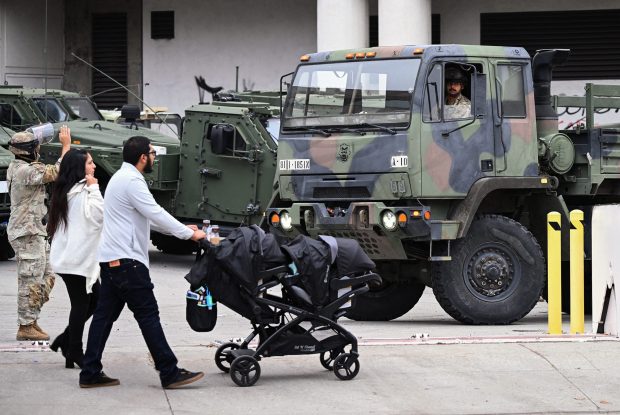On June 15, 1921, Bessie Coleman, the daughter of a woman who had once been enslaved in Texas, earned a brevet, a pilot’s license, from the Fédération Aéronautique Internationale, securing her place in history as Queen Bess, the first American civilian pilot to gain this French credential.
Born in 1892, Coleman was an 11-year-old who picked cotton and worked as a domestic alongside her mother when the Wright brothers secured their own place in history as the first brother team to fly a plane. On Dec. 17, 1903, the Wrights gave the world a Christmas present like no other — the gift of flight. As the birdmen took to the air and captivated the imagination of humankind, a young Coleman undoubtedly marveled in awe, curiosity and wonderment as “that flying machine took a man into thin air!”
When Coleman came to Chicago in 1915, she rode the crest of a wave of 6 million African Americans from the agricultural South who sojourned to the industrial North in the Great Migration, and earning her brevet in France, she flew ahead of Amelia Earhart by nearly two years. Coleman became a pioneer at the dawn of the Great Migration and at the dawn of aviation, making her the only woman in the world to force two seemingly disparate lines to intersect.
I wrote a novel based on Coleman’s extraordinary journey from Texas laborer to world-famous pioneer aviator called “A Pair of Wings” largely because the story, the whole miraculous story, seemed hidden in plain sight for nearly 100 years. I had always wanted to fly a plane, yet I had never found Coleman in any textbook in college, nor graduate school. And yet, how did Coleman have the agency to fly an airplane? How did she brand herself 100 years ago, before branding was even a thing?
I didn’t need to invent much at all; there was already the rich tapestry of Coleman’s life. As a woman, Coleman had moved to Chicago from Waxahachie, Texas. Learning French between ages 26 and 29, she began to meet obstacle after obstacle in order to go to France to learn to fly. France became Coleman’s only option, since no one in this country was willing to teach a Black woman to command an airplane right after World War I.
While Coleman does get credit for being a daredevil in the air, my research revealed a great deal more than the stoic beauty, made public in a dozen or so sepia images that have survived a century. She learned French in night school and secured the money of powerful backers in her adopted city of Chicago to finance ocean liner voyages to Europe. In France, she had to find an alternative flight school after her first Paris school shuttered its doors to women. She convinced Allied, as well as German, dogfighters, that she would be a malleable student, and she created a traveling barnstorming show in the U.S. that she got the media to follow. I found evidence in anecdote after anecdote that she overcame overwhelming obstacles to do what she did because she was a solver of complex problems and a truly great critical thinker.
To give context to the cultural landscape in which Coleman earned her historic license in France (in French), women had just earned the right to vote in the U.S. Prohibition was the law of the land, creating an underground of lawless bootleggers who sprang up in the shadows to quench the thirst of a nation whose troops had just returned from the deadliest global conflict in history.
“]
Coleman’s adventurous spirit invited the wounded souls of Great War dogfighters to become her instructors so that she could learn to fly and then use that skill to barnstorm, spreading her own gospel of flight in this country from coast to coast in the 1920s. In fact, Coleman’s French and German instructors were among the world’s first fighter pilots, burnished in aerial warfare so bloody, so gruesome that men who made it past six weeks in the air were dubbed “grandpas.” Deadly new weaponry such as machine guns was mounted to planes, and airmen pushed fragile cloth wings and wooden spars to the edge of their performance. Gaining advantage, one pilot would shoot another out of the air like skeet.
Coleman’s uniform, which she designed, became a statement, a reflection of her ability to believe in herself, despite the financial, racial and gender challenges of the 1920s. Her crisp jodhpurs, Sam Browne belt and knee-high laced boots spoke volumes to crowds of thousands before she ever uttered a word or took off into the blue. When Coleman mounted steps and sank into the deep well of the cockpit, it was not only her floor-length leather duster, but also her self-assuredness, skill and moxie that kept audiences talking from coast to coast.
I believe that Coleman’s agency, her ownership of her true desire, as well as her urgent dedication to pursue that one true thing, is what gave laserlike definition to her life’s work. When she died at age 34, Coleman had owned and flown airplanes before most Americans had purchased their first automobile or had ever seen a plane in the sky. More than anyone I have ever met, Bessie Coleman truly earned a pair of wings.
Carole Hopson is a captain at United Airlines. Based in Newark, New Jersey, she flies a Boeing 737. Her forthcoming historical novel, “A Pair of Wings,” will be published Aug. 20.
Submit a letter, of no more than 400 words, to the editor here or email letters@chicagotribune.com.



